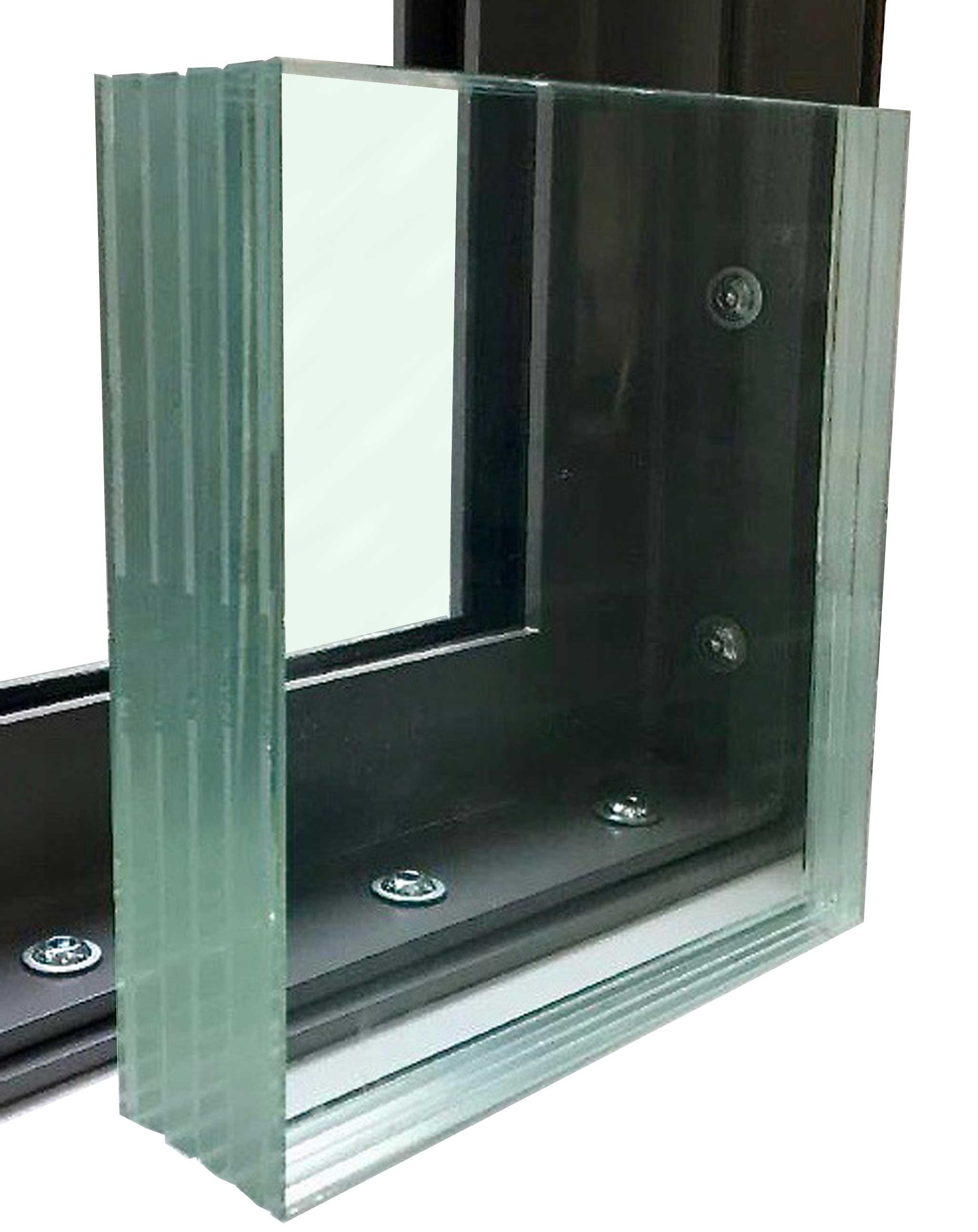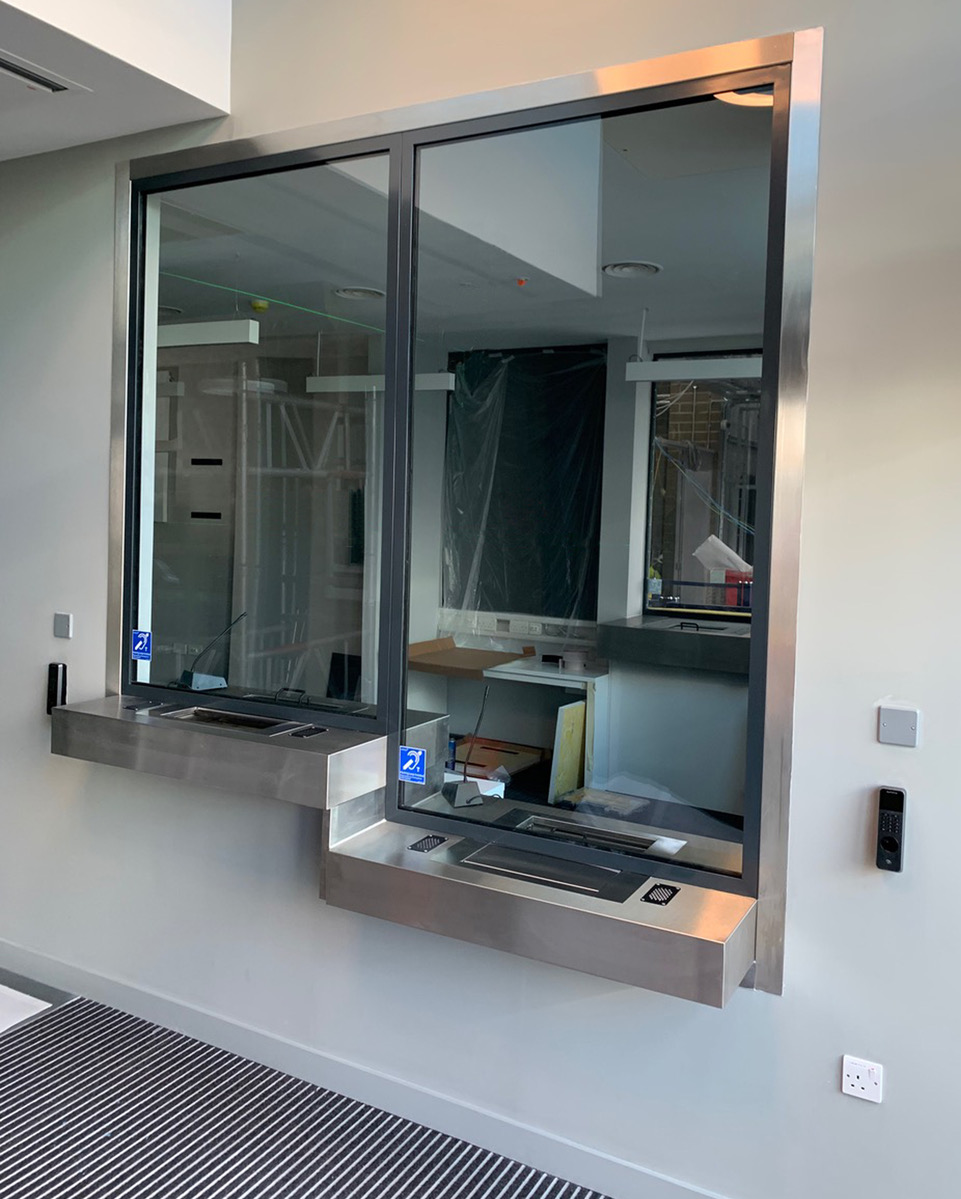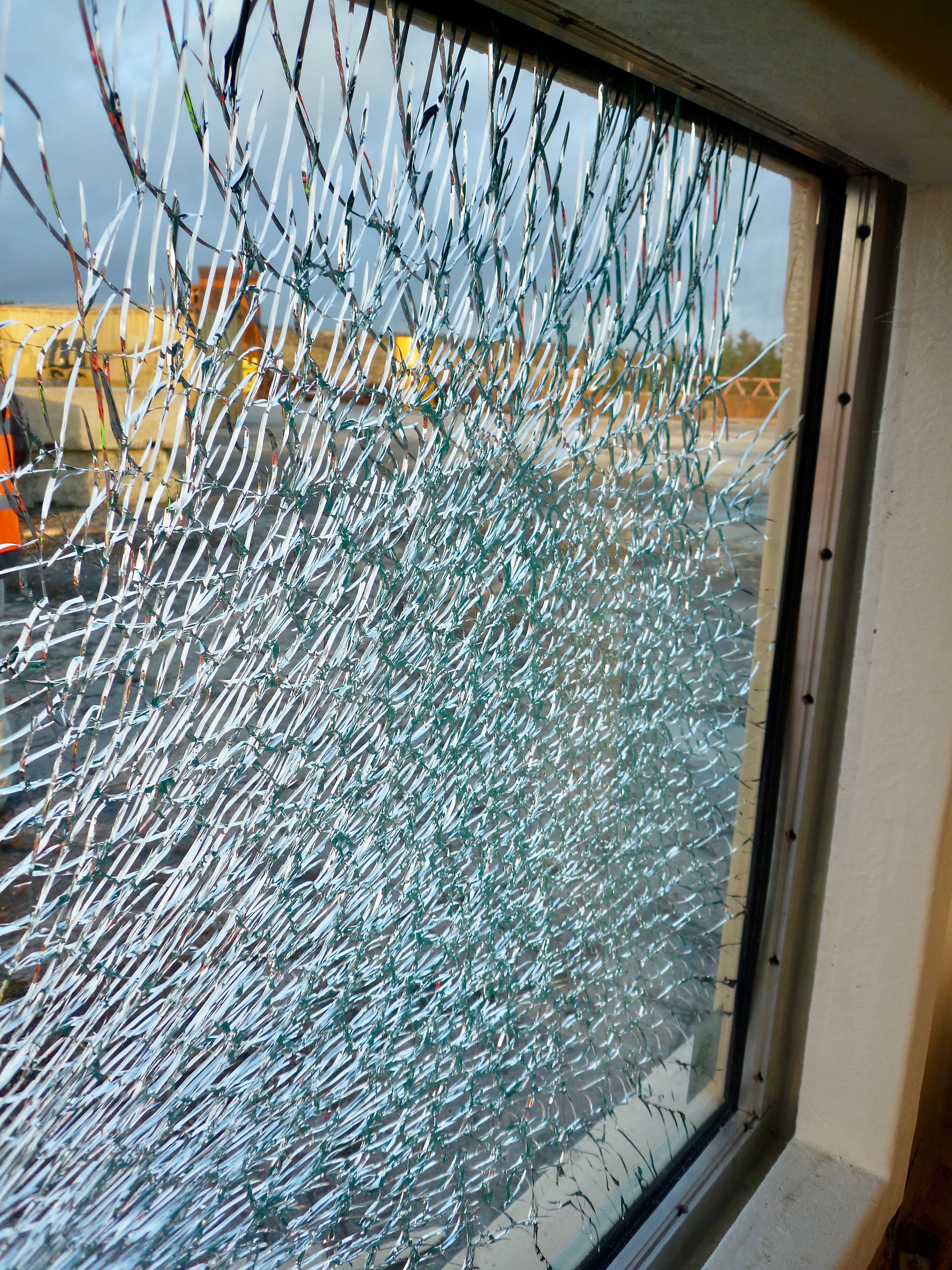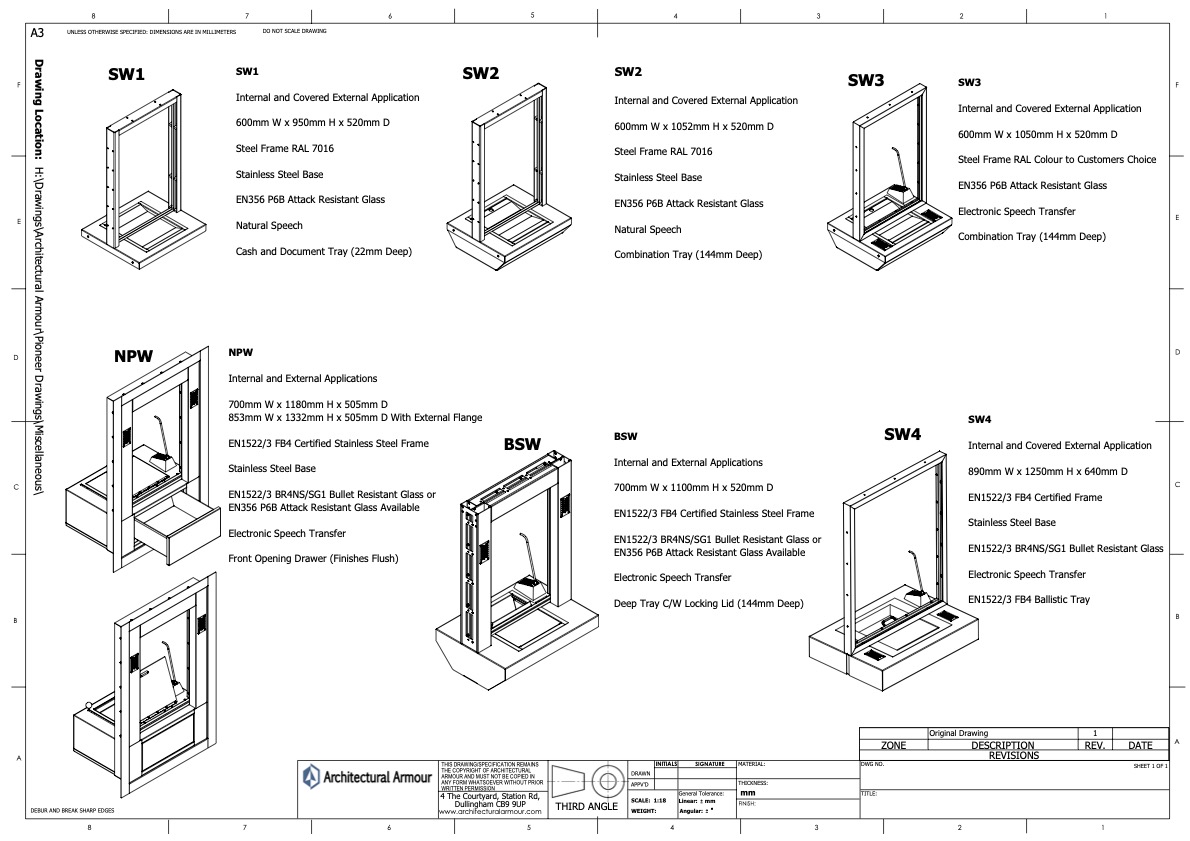 Blast Resistant Glass
Blast Resistant Glass

Architectural Armour have experience providing solutions for blast resistant windows using standard or enhanced multi-laminates. Typically our blast glass is also bullet resistant so the product can withstand the fragmentation as well as the blast pressure.
Our clients request blast windows and doors in a variety of performance levels, C15, C20 & C30 , EXV for vehicle bombs, SB for satchel bombs, PSI and more. Peak blast pressure and overpressure are technically measured in several units, common units are kPa (Kilopascals) PSI (Pounds per Square Inch). Alternatively we may see kPa-msec. This is telling us the pressure and for how long it will ‘push’ against the window. This is referred to as an ‘Impulse’ load. Please see blast technical specifications for testing methods.
As the framing of blast glass is critical to its overall performance customers typically purchase windows, which you can see more on here Blast Resistant Windows
For more information on our options and to discuss you requirements further please contact us via email or telephone; mailto:info@architecturalarmour.com or +44(0) 1981 257000.
Testing Overview
The purpose of blast-resistant glazing is to reduce the risk of injury to building occupants. The performance of the blast-resistant glazing has to be validated by testing evidence. The first design step is to define the explosive loading. This is best specified as blast pressure and impulse, which can be derived from a charge weight and standoff. This is often described as the threat.
In designing blast-resistant glazing, it is usually accepted that some degree of damage to the glass is almost inevitable. The second design step is to agree the acceptable risk within the building. This is normally specified as the acceptable hazard level. Glazing refers to both windows and glazed facade systems. It is important to consider the window or facade as a system. This includes the glass, the gasket or sealant, the frame, the fixing of the frame, and the support system.
The blast pressure is applied to the whole area of the window or facade and the behaviour of the glass is dependent on the pane size. The loads on the support system and its performance are also dependent on the size of the glass pane(s). If glass is tested in a rigid frame, the stresses in the glass are maximised as are the loads in the frame’s fixings. However, if the glass is mounted in a frame with gaskets or sealants, the system’s flexibility tends to reduce the stresses in the glass and the fixings.
Blast Technical Specifications
GSA-TS01:2003 Standard Test Method for Glazing and Window Systems Subject to Dynamic Overpressure Loadings
EN 13541 Glass in building - Security glazing - Testing and classification of resistance against explosion pressure
EN 13123-2 Windows, doors and shutters - Explosion resistance - Requirements and classification
ISO 16933:2007 Glass in Building -- Explosion-Resistant Security Glazing -- Test & Classification for Arena Air-Blast Loading
Hazard level
As mentioned above, in explosion testing, it is accepted that some degree of damage to the glass is almost inevitable. The purpose of blast-resistant glazing is to reduce the risk of injury to the building’s occupants. Blast leakage, minor damage and glass fragments are allowed as long as they do not exceed specified criteria. As standards have been developed, these criteria have become better defined.
EN 13541:2012 does not allow any holes (breakthrough from the attack to the protective face) in the glass or between the glass and the frame. It permits an additional designation of splinters (S) or no splinters (NS) to be awarded. Splintering is defined as cracking of the rear (protective) face or small fragments (glass dust) being launched from the rear face.
EN 13124-1:2001 and EN 13124-2:2004 do not allow any opening that can be penetrated with a stiff rod of 10 millimetres (mm) in diameter. No part of the frame or gaskets can become detached. As in EN 13541:2012, splintering needs to be identified and registered as S or NS.
GSA-TS01:2003 adopted the United Kingdom (UK) hazard-rating levels with minor modifications. This rating system is based on the projection of the glazing debris into a 3 metre (m) deep cubicle.
In ISO 16933:2007 and ISO 16934:2007 more sophisticated hazard criteria were adopted. Finally, these standards allow a classification into hazard levels with regard to the observed damage. The UK hazard-rating levels were adapted to include better definitions of allowable fragments and permitted pull-out of the glass from the frame.
Blast Products
Ballistic and Blast Guard Houses Modular New Build or Upgrading existing. EN1522/3 FB2 to FB7 , NIJ 0108.01 LII to IV UL 752
Security Counters and Screens Physical, Ballistic or Blast Resistant Counters for any application to keep staff secure
Ballistic Vents/Louvres Bespoke products designed to allow passage of air whilst offering bullet and blast protection
Explosion Vents and Rupture Panels Safety devices used to contain an explosive blast effect within a building.
Blast Windows Blast windows to protect against terrorist attacks and longer petrochemical explosions
Blast Resistant Doors Steel manufactured doors offering blast protection to buildings
Bullet Boards A selection of ballistic grade walling sheets
Blast Specifications
GSA-TS01:2003 Standard Test Method for Glazing and Window Systems Subject to Dynamic Overpressure Loadings
EN 13541 Glass in building - Security glazing - Testing and classification of resistance against explosion pressure
EN 13123-2 Windows, doors and shutters - Explosion resistance - Requirements and classification
ISO 16933:2007 Glass in Building -- Explosion-Resistant Security Glazing -- Test & Classification for Arena Air-Blast Loading
Latest News
Split Height Transaction Window Duo
Using experience on previous projects and customers requirements we have designed a split height transaction window offering standing and DDA access to reception and data centre environments.

For more information and pricing please contact our office on info@architecturalarmour.com or +44(0)1981 257000
Read more
Increased Stock for Express Delivery
We have increased our range of stock transaction windows to six units , ready for express dispatch.
Our range of transaction windows include, physical attack resistant and bullet resistant internal and external models. Please see below an outline of our products.
Architectural Armour are offering standard stock items and bespoke orders to suit. Please contact us on +44(0) 1981 257000
Read more


